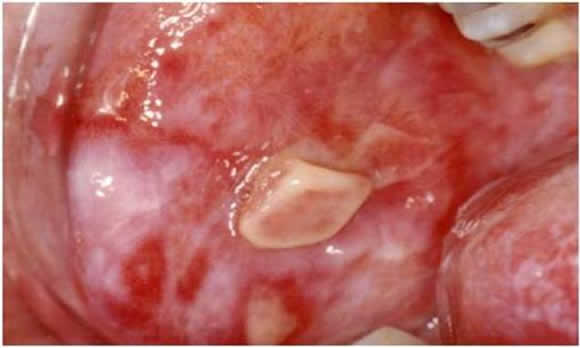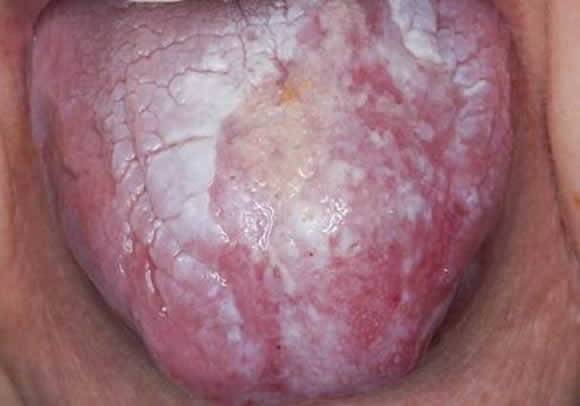Dental
Graft vs Host Disease Related Damage
Oral cGvHD (chronic graft vs host disease) can involve the mucosa or the salivary glands. Symptoms include:
- Oral pain
- Dry mouth
- Changes in taste and sensitivity to certain foods5
Clinical examination may show:
- Mucosal erythema
- Lichenoid changes
- Xerostomia
- Mucosal atrophy
- Oral ulceration5
The most common manifestations of oral mucosal involvement are:
- Erythema (42%)
- Reticular/lichenoid Changes (36%)
- Ulcerative Changes (21%)5
Oral cGvHD showing ulceration, erythema, hypopigmentation, and hyperkeratosis

Lichen-planus changes of cGvHD of the tongue.
.
Second Cancers:
There are higher rates of secondary oral malignancies (eg squamous cell carcinoma) in patients with longstanding oral cGvHD6
Infections:
Opportunistic viral and fungal infections are common.
The use of local antiviral and/or antifungal solutions (sometimes in combination with steroids) is often recommended1.
Patients should be encouraged to maintain meticulous oral hygiene and establish a program or regular professional care with an oral health care specialist1.
Specific local treatment for oral cGvHD may include:
- Topical steroid ointments or rinses
- Topical immunosuppressive agents (eg tacrolimus)
- Sialogogues (eg. pilocarpine)

